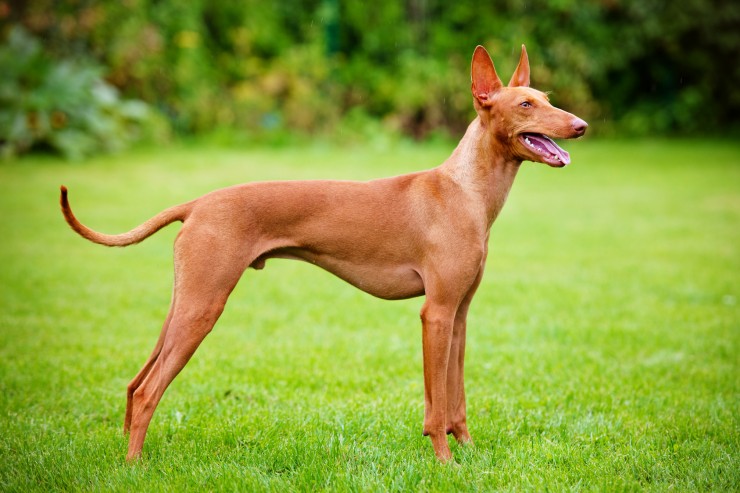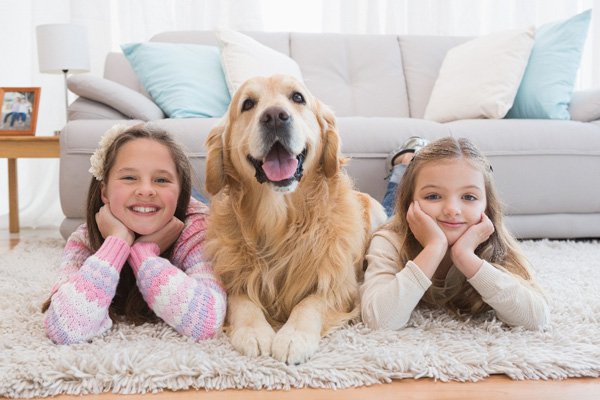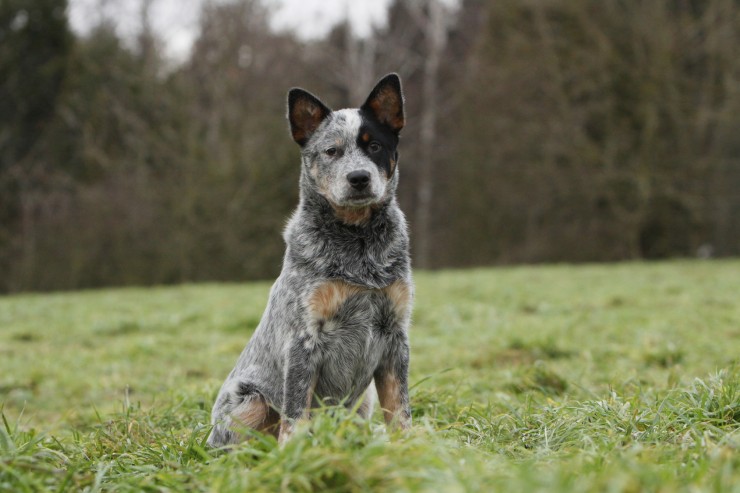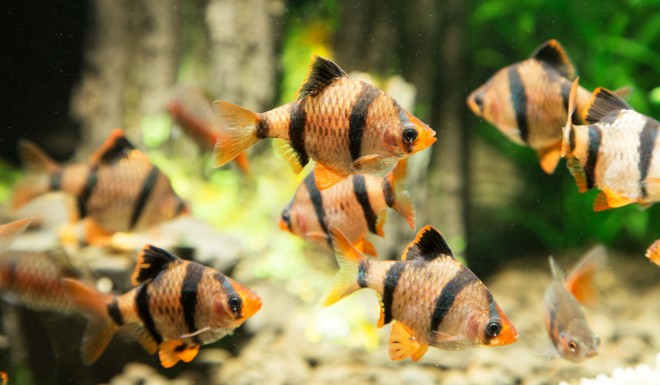The Rhodesian Ridgeback has a ridge of hair down the centre of the back. This is what distinguishes the Rhodesian ridge back, and gives it its name. They're a large dog with the male standing 25-27 inches in height and weighing some 80-90 pounds, and the slightly smaller female bitch measuring 24-26 inches and weighing 65-75 pounds. The dogs can be grown somewhat larger than this in the UK. They are muscular dogs and their sleek dense hair is short and glossy in appearance. They are blessed with a smooth strong tail that has a gentle backward curve to it. They are of reasonable intelligence but training can be difficult, so should start as young as possible.
History. Originating in Zimbabwe, previously known as Rhodesia, the Rhodesian ridge back was bred as a retriever and hunting dog. It was also used to take care of children and guard property. History shows that this breed was used as companions and hunters in the 15th century, and probably before, by the Hottentot tribesmen in South Africa. These dogs were actually bred to hunt the game, they would not actually attack but rather would track their prey and corner them. Once the dog had cornered its prey barking would inform the hunters that an animal had been entrapped. It is very rare nowadays through these dogs to be used for hunting, most commonly they are now family pets or guard dogs.
Temperament. As a breed they tend to be ferocious when hunting, but unusually, they are good in the home being obedient, gentle and calm. They are not recommended with small children as they can tend to play very roughly. They are vigilant and brave but can be reserved in the presence of strangers. Time and energy are required to own one of these dogs. It is necessary to give them lots of physical exercise and mental stimulus, and you must assert yourself as the master, or pack leader. If they do not get enough exercise they may become nervy and even unmanageable. You need to be consistent in approach and firm, but gentle. Whilst being fairly easy to train, as a result of the intelligence and inbred instincts, if they are not treated with a firm but fair hand, they can become stubborn and wilful. However, if you do assert yourself well and give plenty of exercise these dogs will be protective of their owner and quite sociable.
Health issues. Whilst being a hardy and healthy breed that can withstand dramatic temperature changes, they are susceptible to hip dysplasia, cysts, and dermoid Sinus.
Grooming. These are average shedders, and because of their smooth coat can be, mostly just, brushed regularly with a firm bristle brush. They should only be bathed and shampooed when necessary.
Living conditions. As long as they are provided with enough exercise these dogs are reasonably happy in most living environments. They tend to prefer a large yard and garden that they are relatively quiet and calm indoors. They will adapt to an apartment but by preference would like a Farmhouse.

 A Rare And Beautiful Hound - The Cirneco Dell’etna
A Rare And Beauti
A Rare And Beautiful Hound - The Cirneco Dell’etna
A Rare And Beauti
 Find Vital Pet Vaccines at Mansfield Animal Hospital
Find Vital Pet Vaccines at Mansfield Animal Hospital
Find Vital Pet Vaccines at Mansfield Animal Hospital
Find Vital Pet Vaccines at Mansfield Animal Hospital
 The Genetics Of Canine Mating And Reproduction, And What This Means For Breed Lines
The Genetics Of C
The Genetics Of Canine Mating And Reproduction, And What This Means For Breed Lines
The Genetics Of C
 The Health Challenges Of The French Bulldog
The Health Challe
The Health Challenges Of The French Bulldog
The Health Challe
 Quarantine Tanks For Fish
Quarantine Tanks
Quarantine Tanks For Fish
Quarantine Tanks